 W
WThe German East Asia Squadron was an Imperial German Navy cruiser squadron which operated mainly in the Pacific Ocean between the mid-1890s until 1914, when it was destroyed at the Battle of the Falkland Islands. It was based at Germany's Kiautschou Bay concession in China.
 W
WThe High Seas Fleet (Hochseeflotte) was the battle fleet of the German Imperial Navy and saw action during the First World War. The formation was created in February 1907, when the Home Fleet (Heimatflotte) was renamed as the High Seas Fleet. Admiral Alfred von Tirpitz was the architect of the fleet; he envisioned a force powerful enough to challenge the Royal Navy's predominance. Kaiser Wilhelm II, the German Emperor, championed the fleet as the instrument by which he would seize overseas possessions and make Germany a global power. By concentrating a powerful battle fleet in the North Sea while the Royal Navy was required to disperse its forces around the British Empire, Tirpitz believed Germany could achieve a balance of force that could seriously damage British naval hegemony. This was the heart of Tirpitz's "Risk Theory", which held that Britain would not challenge Germany if the latter's fleet posed such a significant threat to its own.
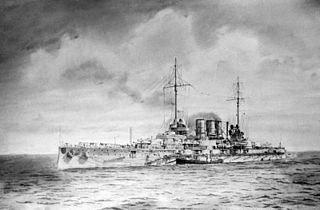 W
WThe I Battle Squadron was a unit of the German Imperial Navy before and during World War I. Being part of the High Seas Fleet, the squadron saw action throughout the war, including the Battle of Jutland on 31 May – 1 June 1916, where it formed the center of the German line.
 W
WThe I Scouting Group was a special reconnaissance unit within the German Kaiserliche Marine. The unit was famously commanded by Admiral Franz von Hipper during World War I. The I Scouting Group was one of the most active formations in the High Seas Fleet during the war; the unit took part in every major fleet operation in the North Sea, including the battles of Dogger Bank and Jutland. The unit also saw limited action in the Baltic Sea, including the Battle of the Gulf of Riga.
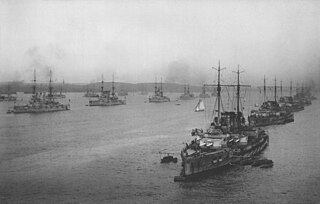 W
WThe II Battle Squadron was a unit of the German High Seas Fleet before and during World War I. The squadron saw action throughout the war, including the Battle of Jutland on 31 May – 1 June 1916, where it formed the rear of the German line.
 W
WThe III Battle Squadron was a unit of the German High Seas Fleet before and during World War I. The squadron saw action throughout the war, including the Battle of Jutland on 31 May – 1 June 1916, where it formed the front of the German line. The ships were interned in Scapa Flow after the end of the war, where they were scuttled by their crews. Most of the ships of the squadron were raised for scrapping, though three remain on the bottom of the harbor.
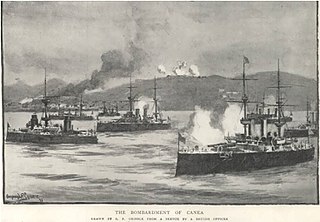 W
WThe International Squadron was a naval squadron formed by a number of Great Powers in early 1897, just before the outbreak of the Greco-Turkish War of 1897, to intervene in a native Greek rebellion on Crete against rule by the Ottoman Empire. Warships from Austria-Hungary, France, the German Empire, Italy, the Russian Empire, and the United Kingdom made up the squadron, which operated in Cretan waters from February 1897 to December 1898.
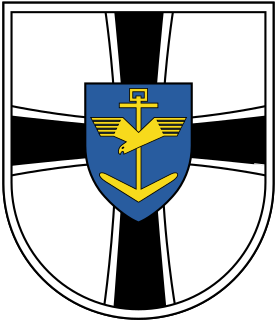 W
WThe Marinefliegerkommando is the naval air arm of the German Navy.
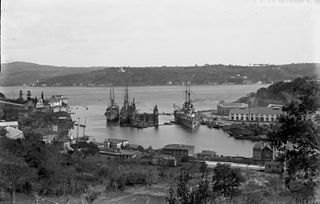 W
WThe Mediterranean Division was a division consisting of the battlecruiser SMS Goeben and the light cruiser SMS Breslau of the German Kaiserliche Marine in the early 1910s. It was established in response to the First Balkan War and saw action during the First World War. It was disbanded after the ships were transferred to the Ottoman Empire four years after their pursuit by the British battlecruisers Indomitable and Indefatigable and light cruisers Dublin and Gloucester.
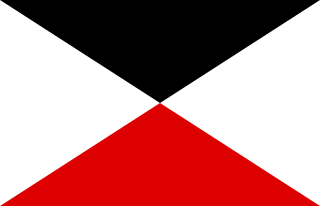 W
WThe Naval Corps was a corps formation of the German Empire in World War I. It was formed in November 1914 and was still in existence at the end of the war.
 W
WThe Einsatzausbildungszentrum Schadensabwehr Marine is a naval school of the German Navy in Neustadt in Holstein. It is subordinate to the department head operations in the naval command in Rostock.
 W
WThe Marinetechnikschule (MTS) in Parow is an engineering school of the German Navy. The school has existed in its current form since 1996 and is the largest training facility in the German Navy. She is subordinate to the operational support commander in the naval command in Rostock, but is technically assigned to the local head of personnel, training, organization.
 W
WThe Schifffahrtmedizinisches Institut der Marine (SchiffMedInstM) is a naval medical institute of the German Navy in Kronshagen. It is the central specialist facility for all medical officers in the German Navy. In addition to the marine medical competence for the fleet, diving medicine also provides services for the entire Bundeswehr. The institute is scheduled to move into a new building on the grounds of the German Armed Forces Hospital in Hamburg in 2023.
 W
WThe Marineoperationsschule (MOS) was a naval school and is the central training facility of the German navy for tactics, navigation and communication with headquarters in Bremerhaven and training group in Wilhelmshaven. Since October 1, 2012, she has been subordinate to the Head of Personnel, Training, Organization in the Navy Command in Rostock.
 W
WThe Marineunteroffizierschule (MUS) is a naval petty officer school of the German Navy in Plön. It reports to the Head of Personnel, Training, Organization in the Navy Command in Rostock.
 W
WThe Marineunterstützungskommando (MUKdo) is a command authority of the German Navy. The advance detachment began in the spring of 2012 in Roffhausen near Wilhelmshaven on the site of the former Olympic works with the establishment of the office. The command was set up on October 1, 2012. It has 1142 military and civil service posts at 16 locations with a focus on the Wilhelmshaven area and Eckernförde. In Virginia Beach there is a branch that serves the connection to the United States Navy.